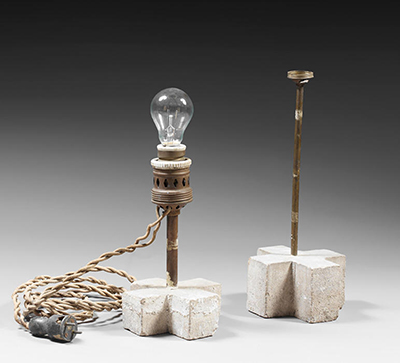Constantin Brancusi created two lamp sculptures in the year 1929. Brancusi was one of the many sculptors eager to produce works emphasizing the natural or organic in his works.
Often composed of softly curving surfaces and ovoid forms, his sculptures referred directly or indirectly to the cycle of life. Brancusi sought to move beyond surface appearances to capture the essence or spirit of the object depicted. Brancusi's ability to design elegant sculptures that conveyed the nature of his subjects is evident in Two Lamps sculptures. For both sculptures, he used Dada or Dadaism's artistic style. Dadaism is an art movement of the 20th century with early centers in Zürich, Switzerland. Dada was a movement that was formed in Zurich during the First World War in an adverse reaction to the horrors and folly of the war.
The arts produced by dada artists such as Brancusi are often satirical and nonsensical. The art genre that Brancusi used in Two Lamp sculptures is called kinetic art. It is a type of art that embraces a considerable number of art forms as well as different media types. An example of such works includes light-related artworks such as the Two Lamps. The materials primarily used by Brancusi in his artworks included bronze, wood, marble, stone, and metal. As seen in the Two Lamps, he paid close attention to his mediums, carefully polishing his pieces for days to achieve sparkle. His work was majorly fueled by primitive cultures, myths, and folklore.
These old-world traditional inspirations formed a contrast to the sleek appearance of his works, resulting in a blend of timelessness and modernity. While many regarded his art as abstract, he insisted on the representational nature of his works, stressing that the works disclosed an essential often-concealed reality. Brancusi sought to create sculptures that conveyed the true essence of his subjects, paving the way for many generations of artists. His sculptures influenced artists such as Isamu Noguchi, who became a significant contributor also in the 20th century.
His technique of direct carving was taken up by sculptors such as Jacob Epstein, Henry Moore, and Barbara Hepworth. Brancusi's inspiration came from artists such as Marcel Duchamp, Paul Gauguin, Fernand Leger and Auguste Rodin. Other influences came from Dionysian and Byzantine Romanian folk art. Bracunsi's sculptural works are housed at the Philadelphia Museum of art, the Museum of Modern Art in New York, the National Museum of Art of Romania in Bucharest, and other museums worldwide. The most extensive collection of Brancusi's work is displayed in the Philadelphia Museum of Art in the United States.




